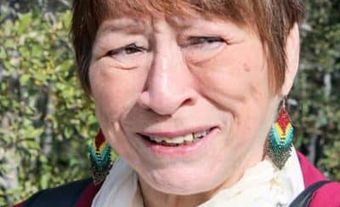Obwandiyag (Pontiac), Odawa chief (born c. 1720 along the Detroit River; died 20 April 1769 in Cahokia, Illinois Country). Obwandiyag was the leader of a loose coalition of Indigenous nations that opposed British rule in what became known as Pontiac’s War (1763–66). The uprising is regarded by many as a historical antecedent to more contemporary Indigenous rights movements.

Early Life
Little is known about Obwandiyag’s early life. Historians believe he was probably born around 1720 along the Detroit River. Obwandiyag may have served with the French and Indigenous forces that defeated Major-General Edward Braddock at Fort Duquesne in 1755.
Pontiac’s War
Obwandiyag is best known for his leadership of Indigenous peoples against the British regime in North America in Pontiac’s War. The conflict began soon after the Seven Years’ War (1756–63) — known as the French and Indian War in the United States — and the fall of New France.
Under Obwandiyag’s leadership, an alliance of Odawa, Wyandot, Potawatomi and Ojibwa ignited hostilities in the spring of 1763. On 28 May, the group attacked a contingent of 96 British soldiers at Point Pelee, about 25 miles from the mouth of the Detroit River. Some of the soldiers escaped, but the majority were either killed or captured. Indigenous forces laid siege to Fort Detroit. Fort Michilimackinac, Fort Sandusky, Fort St-Joseph, Fort Miami and other military installations fell as the resistance spread throughout the Pays d’en haut. In late July, British troops tried to break the siege of Fort Detroit but were ambushed by Obwandiyag’s forces at the Battle of Bloody Run on 31 July.
Did you know?
Pontiac’s War forced the British government to reconsider its approach to Indigenous relations in North America. The Royal Proclamation of 1763, which was issued by King George III on 7 October 1763, created a vast Indigenous reserve west of the Appalachian Mountains. It also stated explicitly that Indigenous people reserved all lands not ceded by or purchased from them. By doing so, Britain hoped to secure the allegiance and loyalty of First Nations.
Despite these victories, Obwandiyag had difficulty holding the alliance together. His direct control was limited to the warriors around Detroit, but even that group disintegrated little by little as the Ojibwa and Odawa returned to winter hunting grounds. The resistance lost much of its momentum and was formally resolved three years later at a peace conference in Oswego, New York.
Death
Obwandiyag was a key signatory to the peace treaty signed on 23 July 1766. He insisted that Indigenous peoples were not surrendering their land by making peace. His presumption of power, however, led to resentment among Indigenous delegates and undermined his already fragile leadership. Obwandiyag was banished from his village sometime before 1768. On 20 April 1769, he was killed by a Peoria assassin outside a trading post near Cahokia, Illinois.

 Share on Facebook
Share on Facebook Share on X
Share on X Share by Email
Share by Email Share on Google Classroom
Share on Google Classroom


